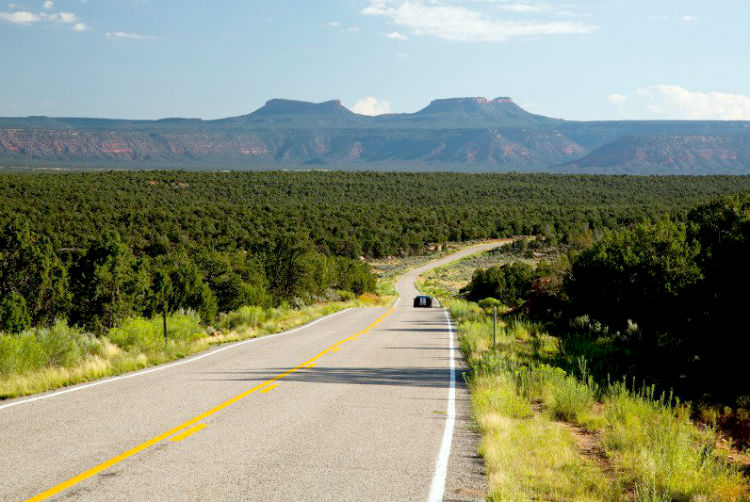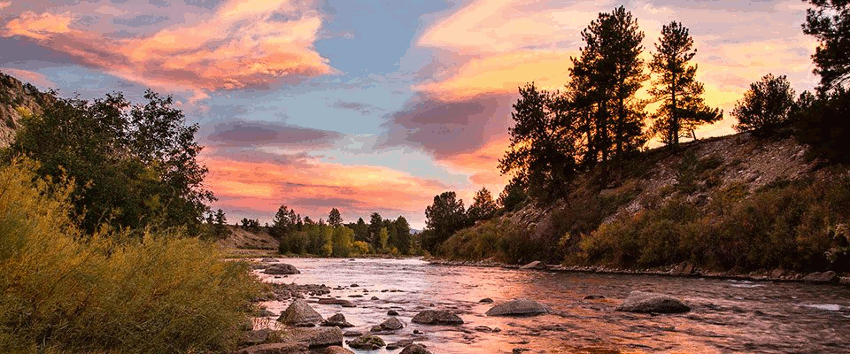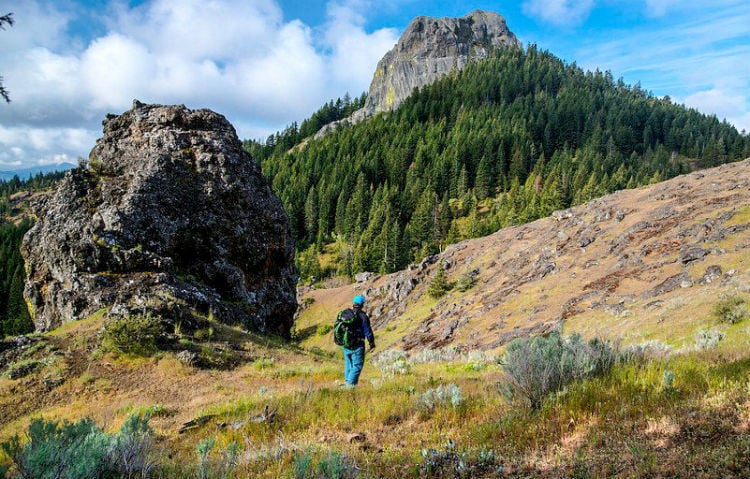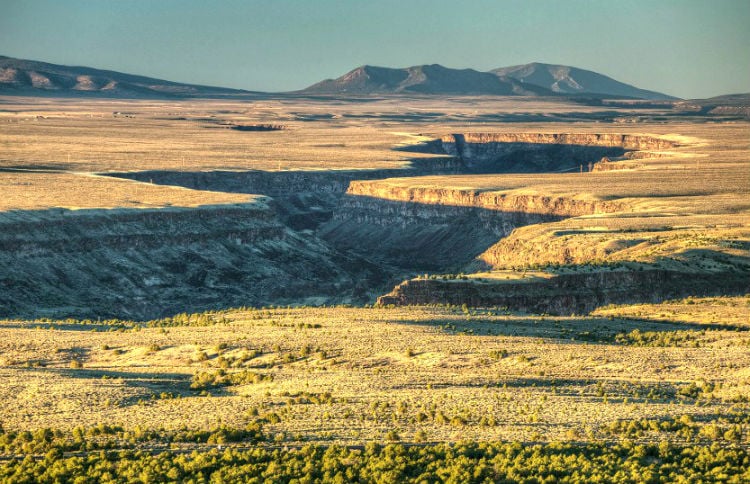Whether you love him or not, RVers owe it to President Obama. Throughout his terms, President Obama expanded and designated more national monuments with awesome RV camping opportunities than any other President. By harnessing the executive authority written in the 1906 Antiquities Act, President Obama added 553 million acres into our national registry of significant cultural landmarks and natural wonders.
Furthermore, many of the national monuments created consist of vast stretches of terrain in the Southwest. With one stroke of his pen, the outgoing President has permanently protected these recreation areas from development. Additionally, from the Pacific Ocean to the Colorado Rockies and south to the Rio Grande River, countless scenic destinations with great RV camping are available. Most campsite areas are primitive but a few developed campgrounds have water and electricity. So, get ready to visit and explore these four Four National Monuments with Awesome RV Camping.
Visit These Four National Monuments with Awesome RV Camping

Bear Ears can be seen along Utah State Highway 191. Photo: Bureau of Land Management
1. Bears Ears National Monument
State: Utah
Size: 1.35 million acres
RV Camping Tips: Named after twin buttes sacred to local Native Americans, Bear Ears protects a myriad of tribal lands and public recreation areas. It’s located near popular camping spots between the Colorado and San Juan Rivers along Highway 191. From the Manti-La-Sal National Forest west of Monticello and south to Mexican Hat, a vast collection of stunning recreation areas are now off-limits to development. Although you probably won’t notice anything has changed, you may notice more people visiting these areas now that the region has received special designation.

Fish, hike or raft Browns Canyon. Photo: Bureau of Land Management
2. Browns Canyon National Monument
State: Colorado
Size: 21,586 acres
RV Camping Tips: Experience epic fly fishing, hiking and white water rafting just three hours southwest of Denver along the Arkansas River. Although you can’t take your RV into this narrow canyon monument, you’ll find plenty of spectacular places to stake a base camp. For instance, The Arkansas Headwaters Recreation District manages the most RV-friendly public campground near the monument. Known as Hecla Junction Campground, this large primitive campground is located right at the river’s edge.

Day hike the PCT at Cascades Siskiyou National National Monument. Photo: Bureau of Land Management
3. Cascade-Siskiyou National Monument
State(s): Oregon, California and regions of Washington.
Size: 99,000 acres
RV Camping Tips: While there are many western National Monuments with RV camping, this attraction straddles three states with epic coastal mountain range where you can explore some of most pristine, rugged and solitary forests in the Pacific Northwest. If you have a smaller RV (and fearless about up steep grades), a spectacular detour west of Ashland, Oregon is worth taking. Also, be sure to set up camp on the shores of Hyatt Lake Campground where RV-friendly sites await. Another is highlight is the day hiking on the Pacific Crest Trail.

Escape New Mexico summer heat along the upper Rio Grande. Photo: Bureau of Land Management
4. Rio Grande del Norte National Monument
State: New Mexico
Size: 242,555 acres
RV Camping Tips: Head south from Colorado along State Highway 285 and explore Northern New Mexico’s rugged terrain.
Although you can explore new National Monuments in Nevada and California, the Rio Grande in New Mexico is where you can hike along volcanic landscapes or raft picturesque canyons through the Rio Grande gorge. In addition, it’s one of the best places to escape New Mexico’s brutal summer heat. Several private RV campgrounds exist as well as the RV-friendly BLM campground called Rio Bravo, near the town of Pilar. Especially relevant for RVers is there are water/electric sites, flush toilets and hot showers that await campers.
While there are nearly a dozen more of Obama’s national monuments with awesome RV camping, future RV Life articles will definitely let you know about more of them. If you have any favorite national monuments, be sure to let us know!

Any and all camping spots had to have been there prior to his taking of land from the respective states. Nothing to thank him for!
I agree. He did nothing here, so for the author to put his name to it is a joke. Yeah he did take land, but nothing much was in the works for all that space. This type of action was irresponsible, just sayin’
Whom did he take the land from and whom did he give it to?
+The land is federal land that was given further protection from private development, who think of it as their land. It belongs to all Americans but local governments and private developers believe they should not be subject to the rules and regulations the rest of us are. To say the land was “taken” is only true in that it was taken from native Americans Indians.
I just got a rv life email. It looks great is it just email or is there a magazine also.i have 25′ leisure travel van and planning doing the usa for a couple months starting in may . Some of your points look really great , hope to be talking with you soon dean
Thank you President Obama, I love that he protected the land!
Preserving public lands for all the people, just about the best thing a President can do — “Thanks a lot — Obama!”
Obviously this is Federal land, never belonged to the states. Great that an effort has been made to protect it from exploitation.
Thank you President Obama for protecting land for future generations with the added benefit of use by all today. Federal lands belong to all American citizens to share, not to states who are unwilling to protect and maintain these sites. Being National Monuments brings in out-of-state tourism to benefit state citizens.
A lot of the land in the US put in the National land monument designation was used by ranchers for grazing, lumber company’s for timber sales , and states for recreation or tourism to bring folks in. Many. many acres have been and will be fenced or gated off so NO ONE can use or benefit from the area. This is fact ! It has effected many counties who depended on this for commerce or the ranchers who had grazing rights for many years had to sell animals or just get out. It was a thoughtless land grab with no sound science behind it. It has negatively affected many jobs, but in small towns and cities so the environmental lobby got the president to act because no one else would do such a thoughtless move at the end of their term, It sounds romantic…..save the land….from who ? Its mine to isn’t it.
Most retired grazing rights on national monuments were bought out by conservation groups resulting in annual replacement financial compensation for ranchers. This is a big win-win for the fragile western environment. Some even continue to have cattle grazing when it is sustainable and appropriate.
All the location are wonderful but going out to find happiness in a World so busy and complicated I just want to enjoy a vacation that is peaceful with no politic involved. 💕 Goulding’s at Monument Valley gets all the check marks, a complete city in itself! Hiking, Camping, Rv’s, Lodge,Restaurant and Tours. Just a place to relax and reconnect.